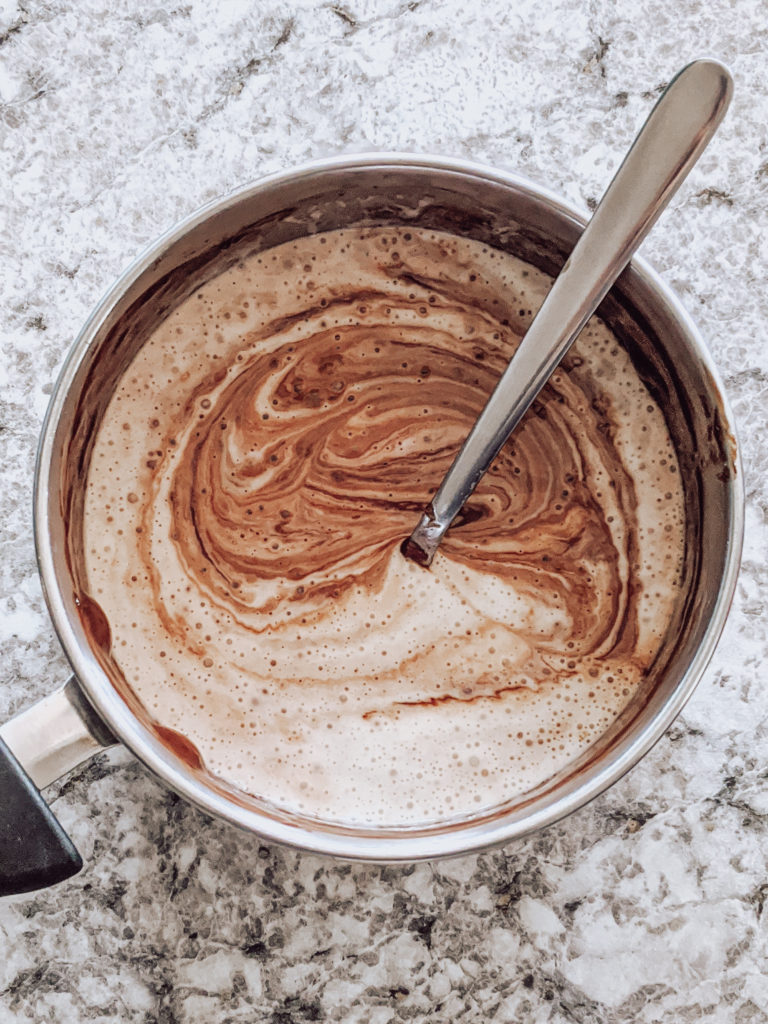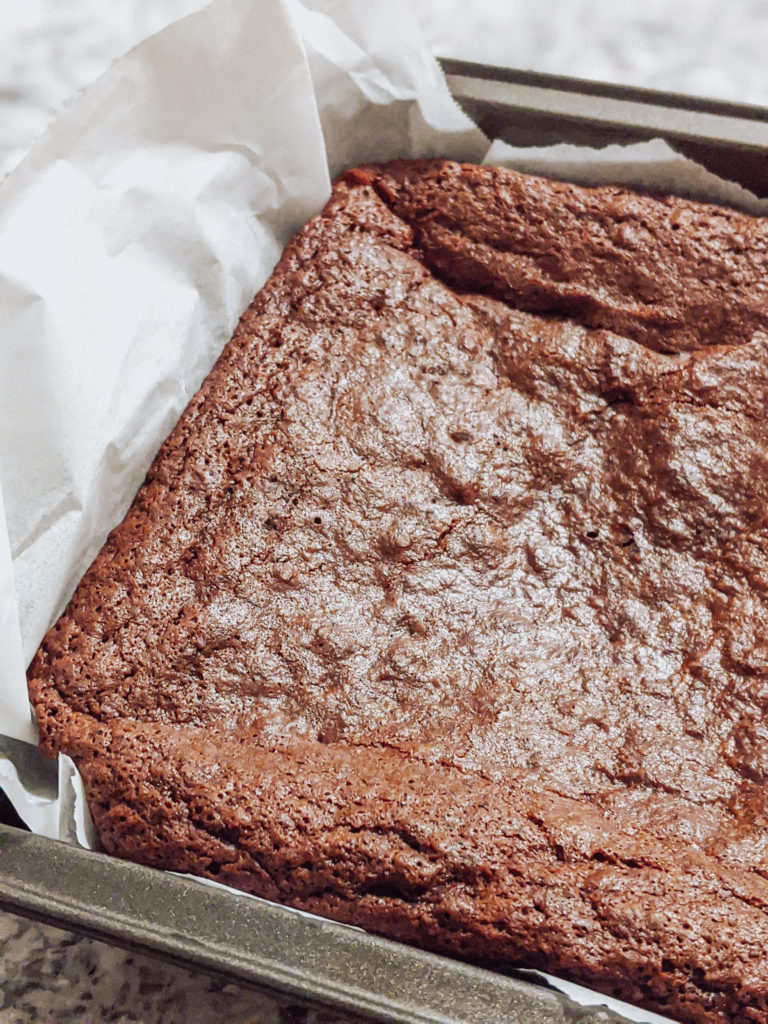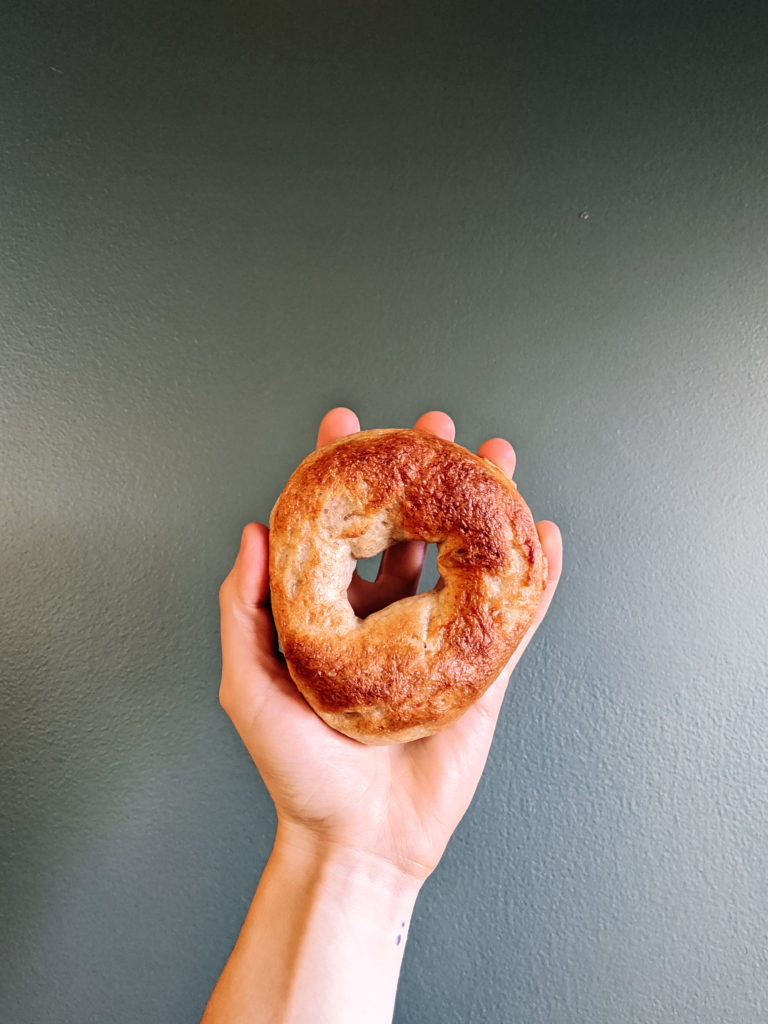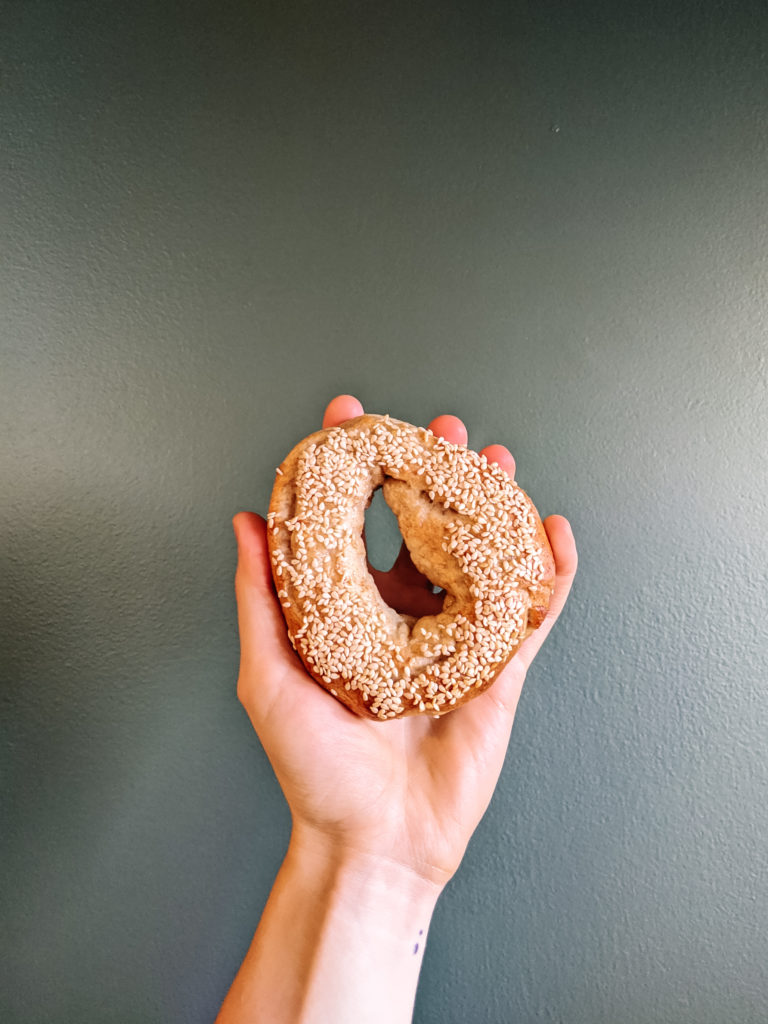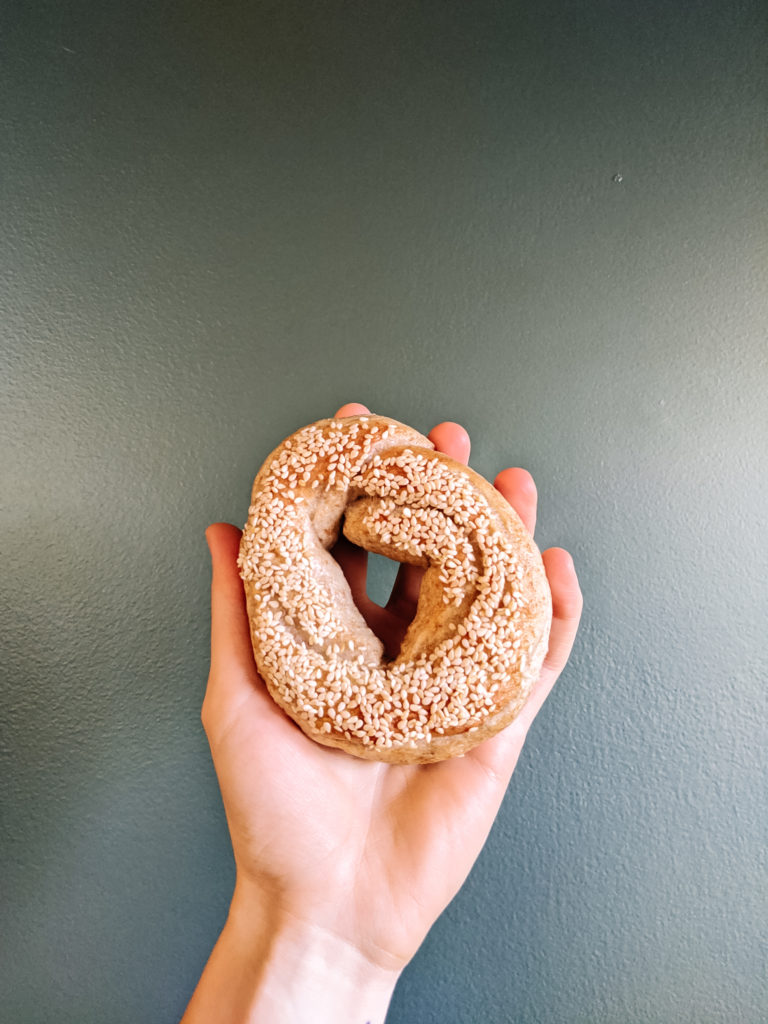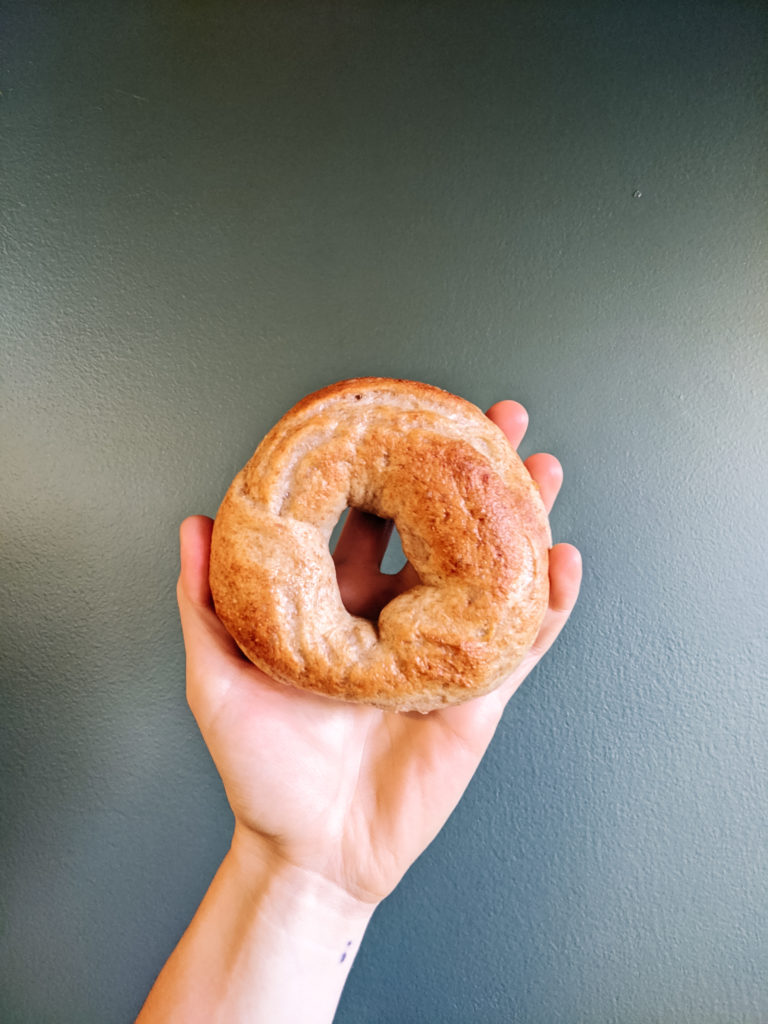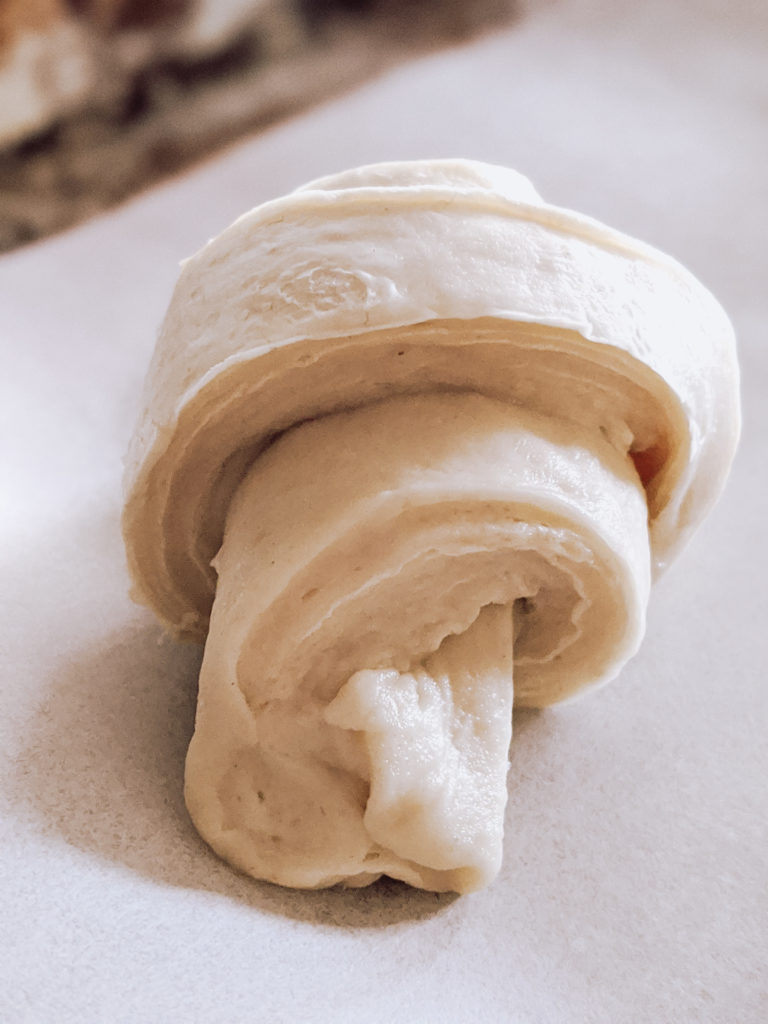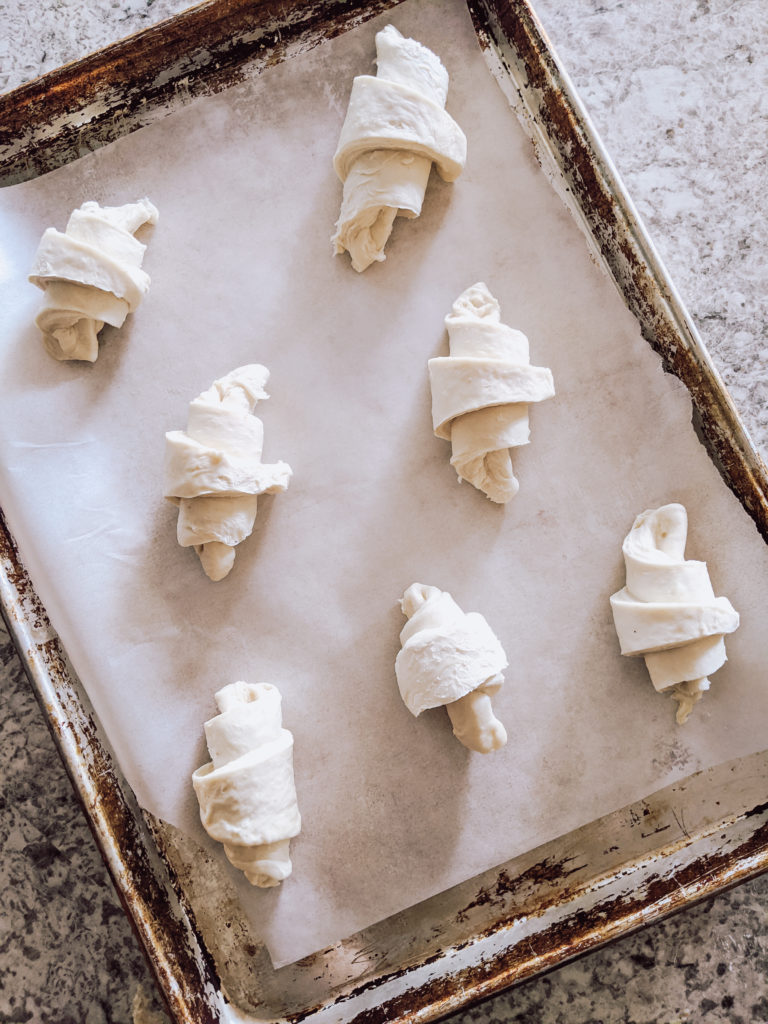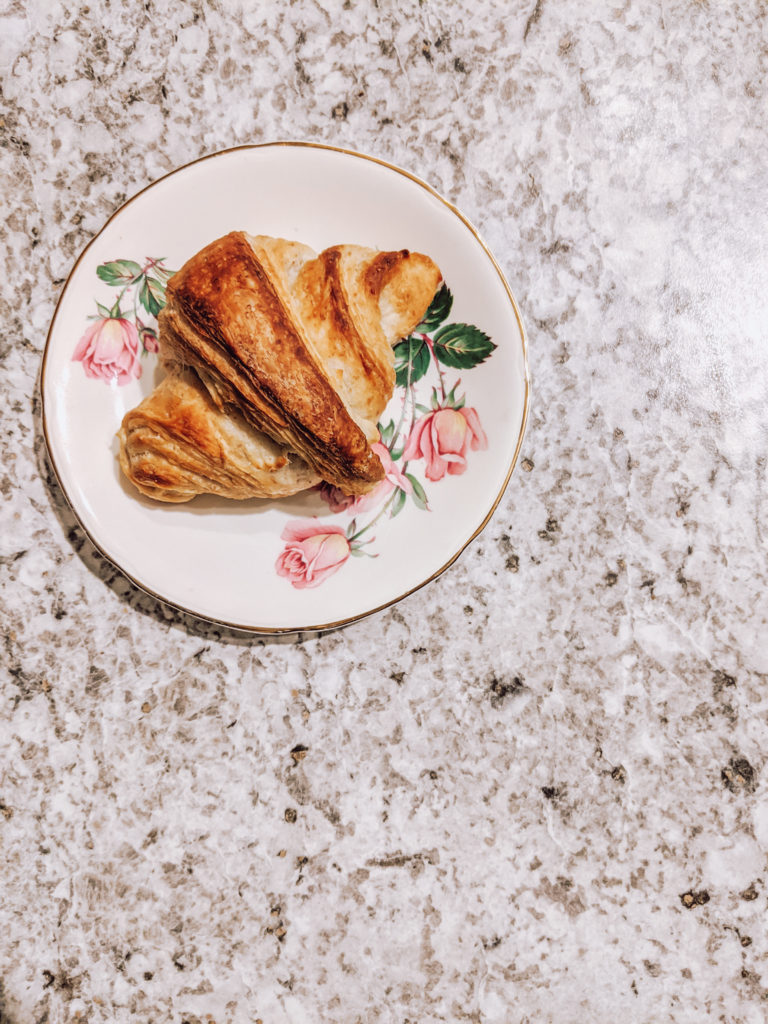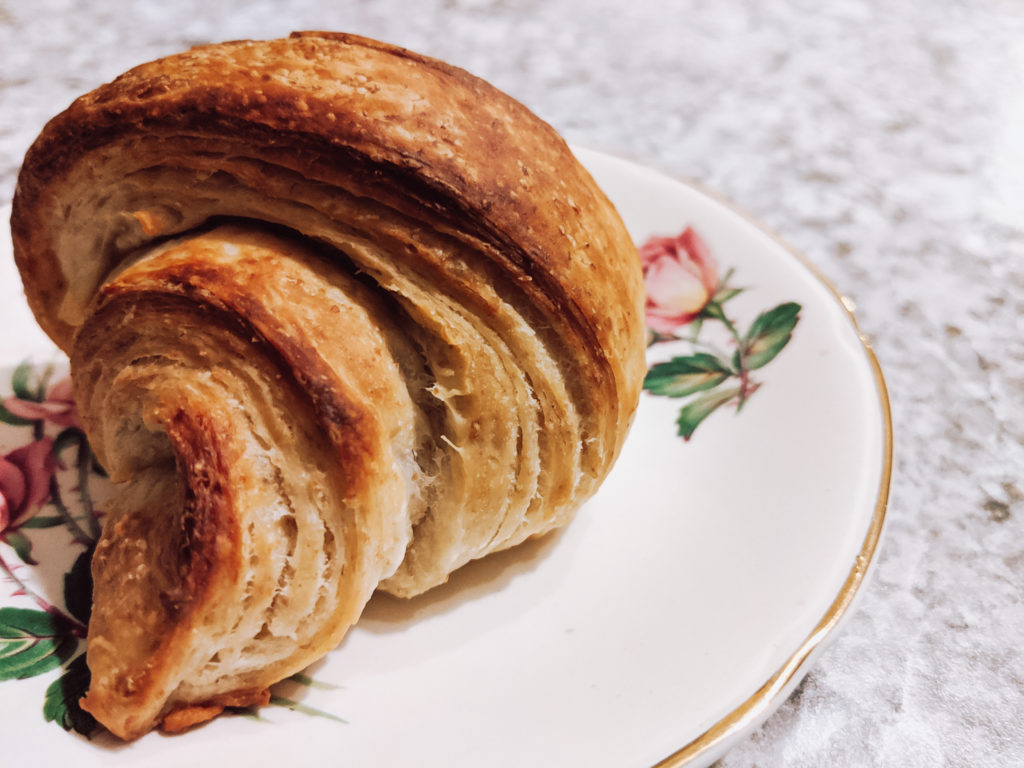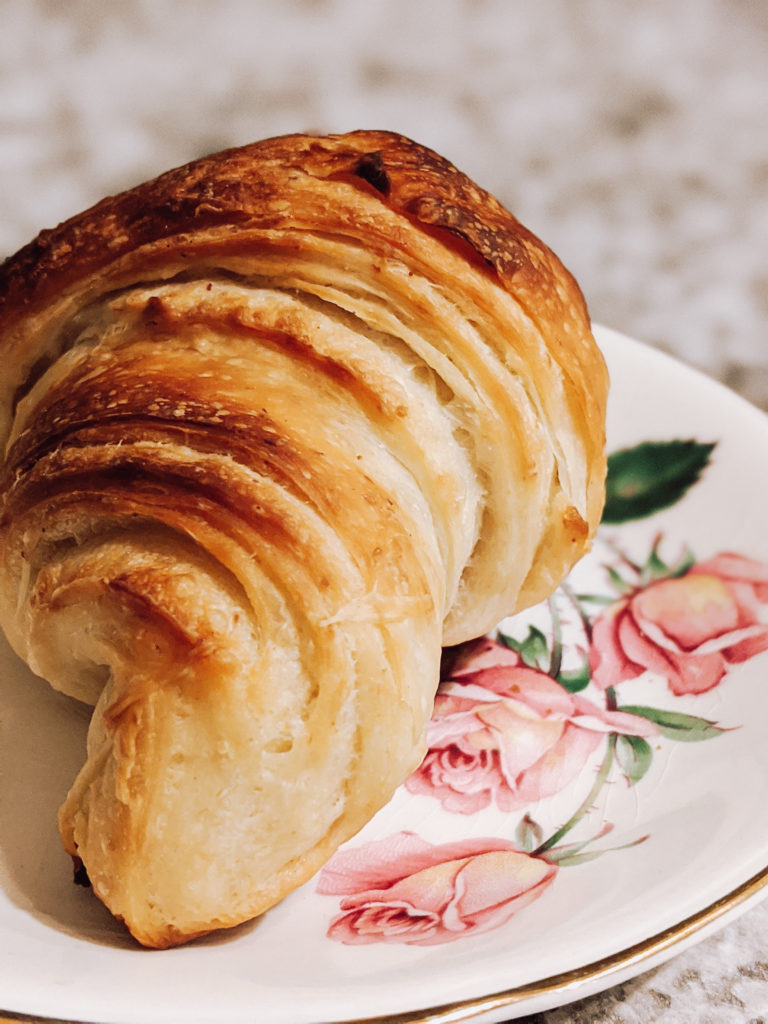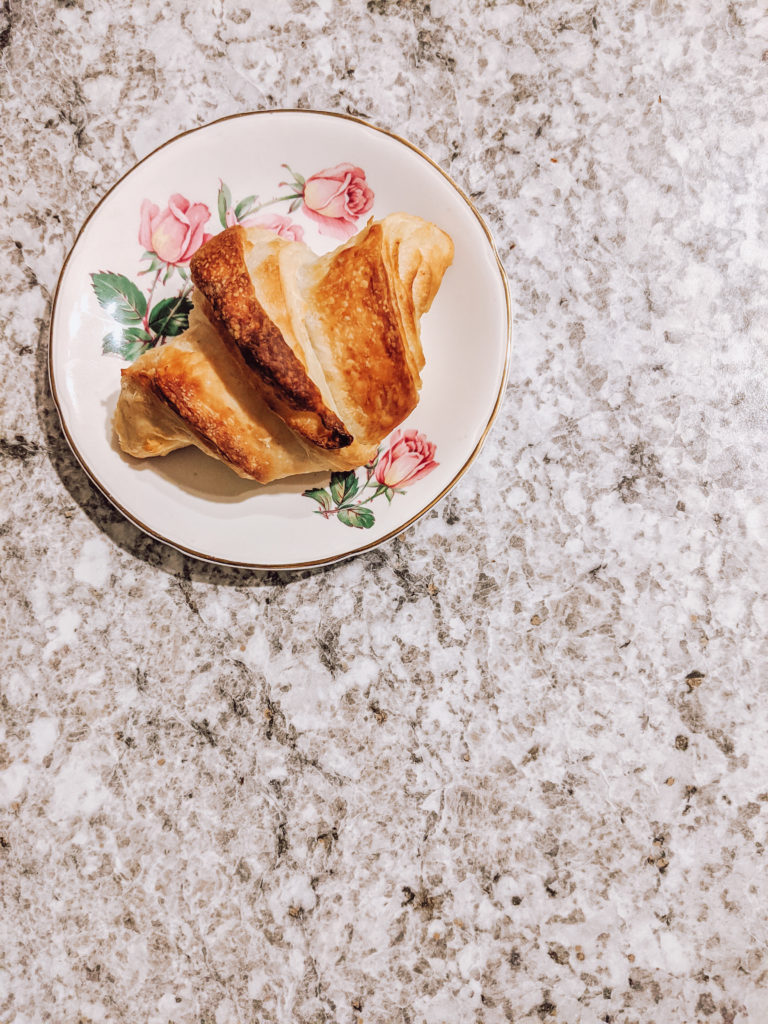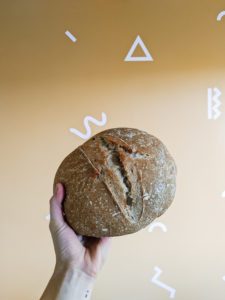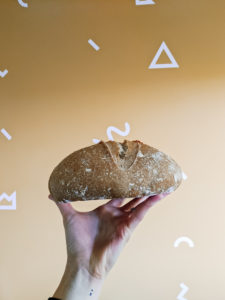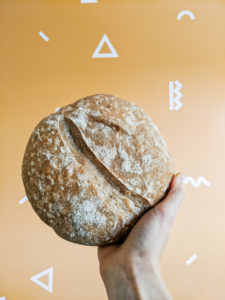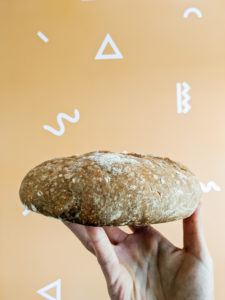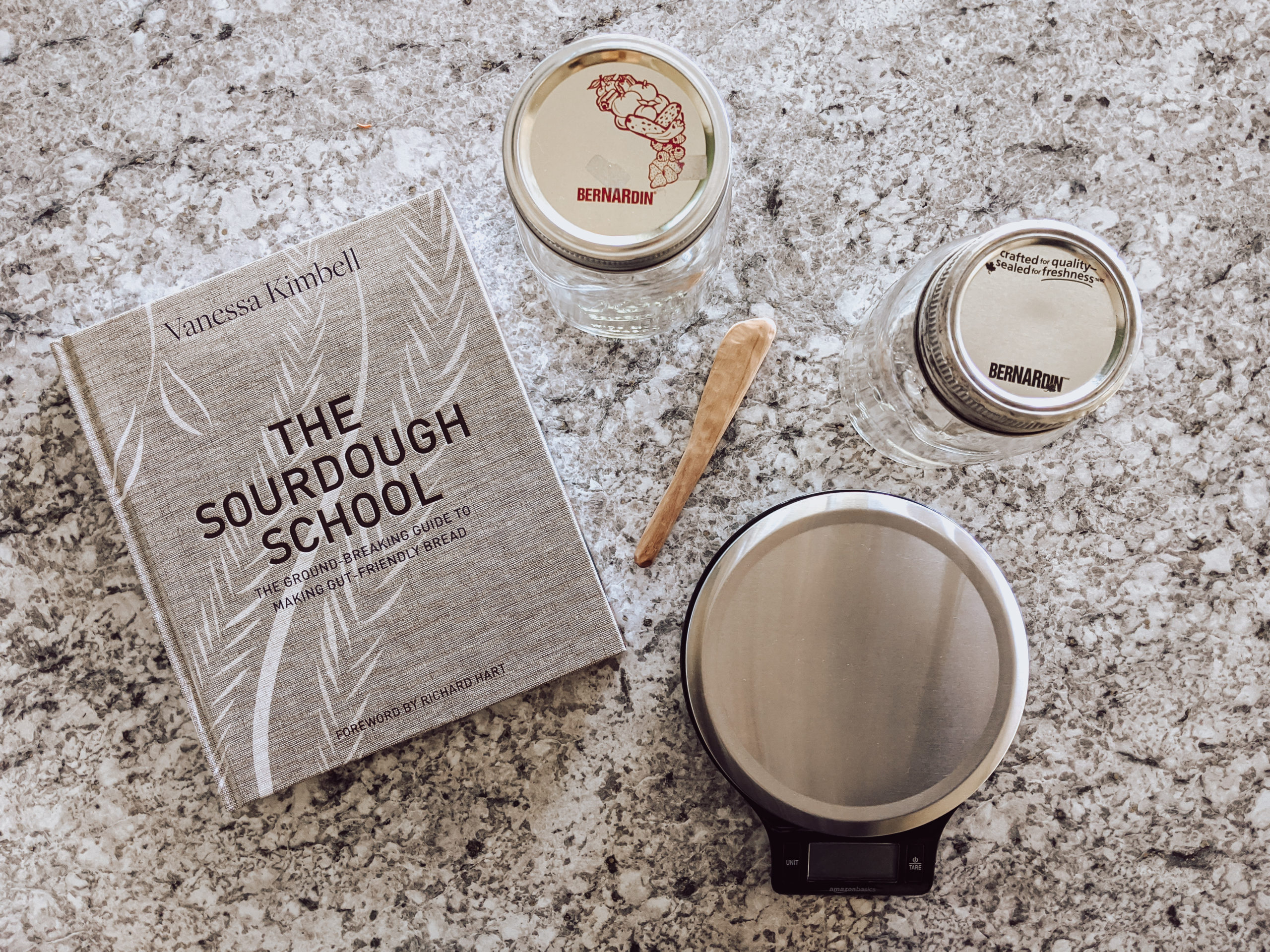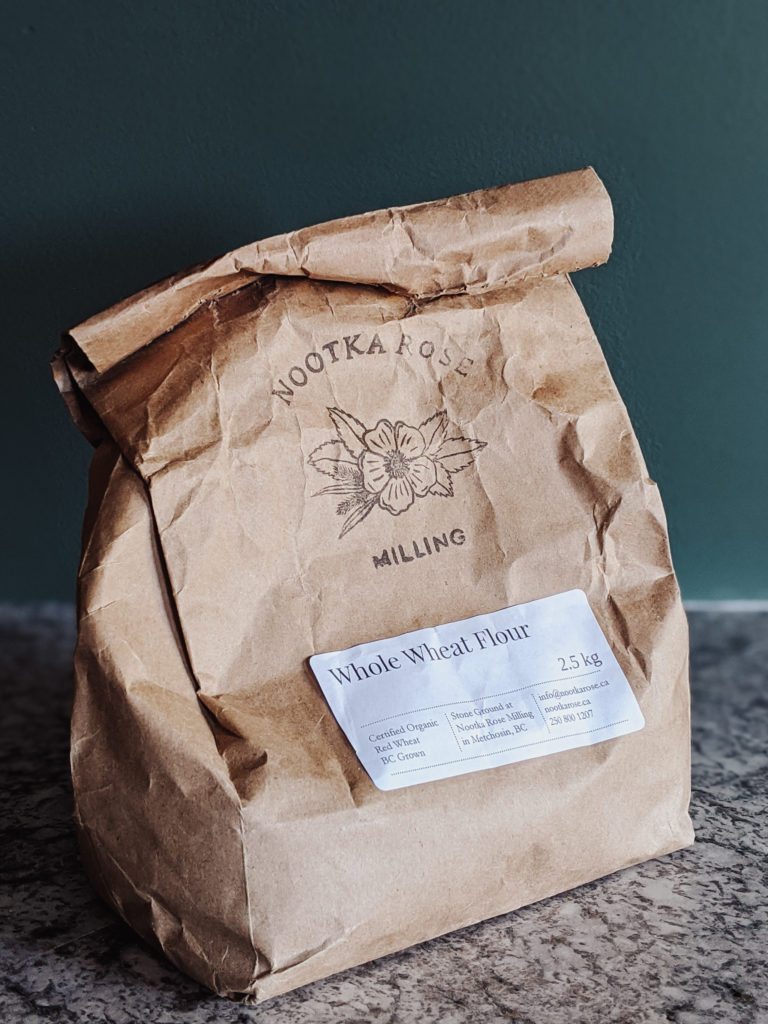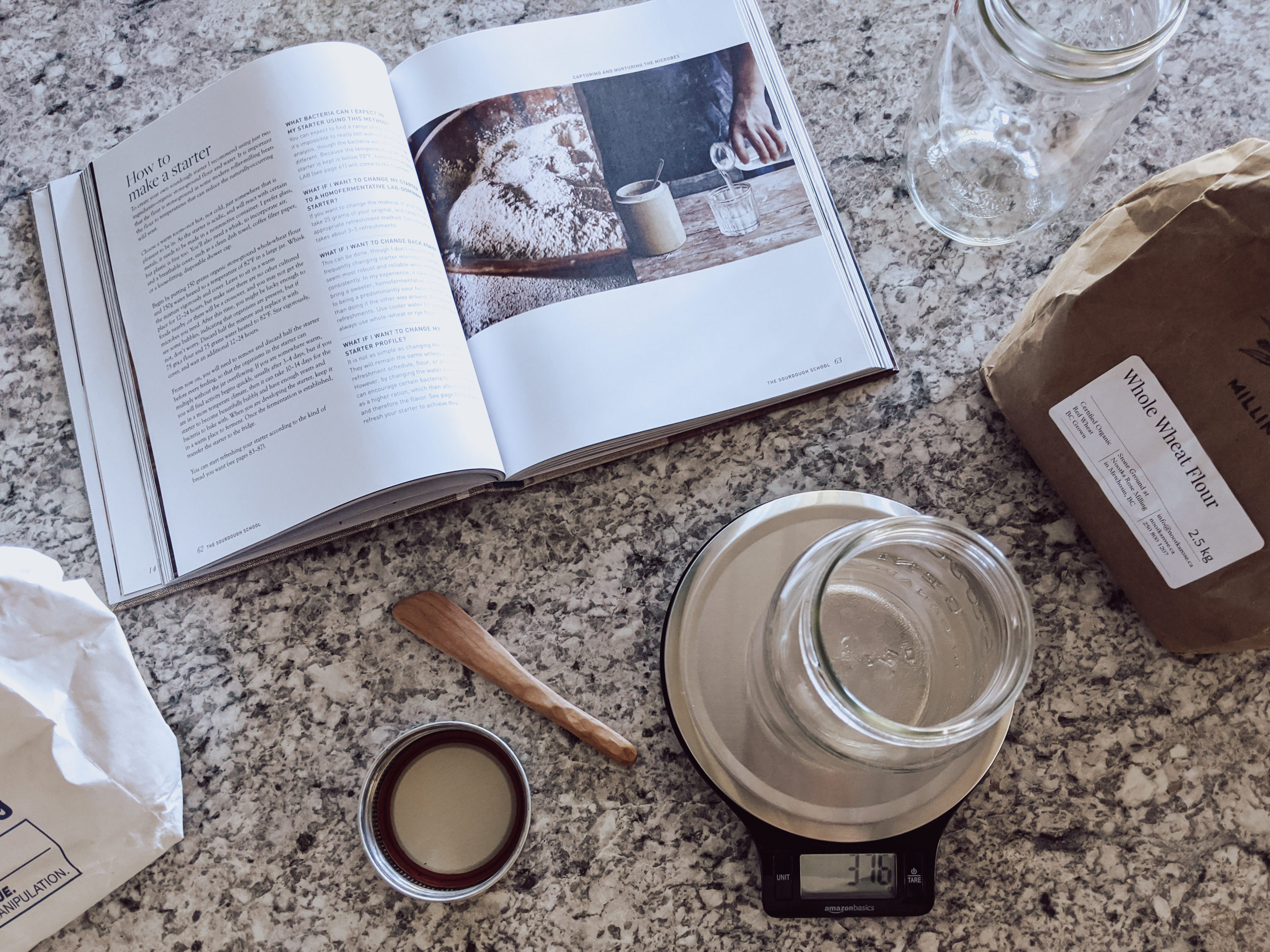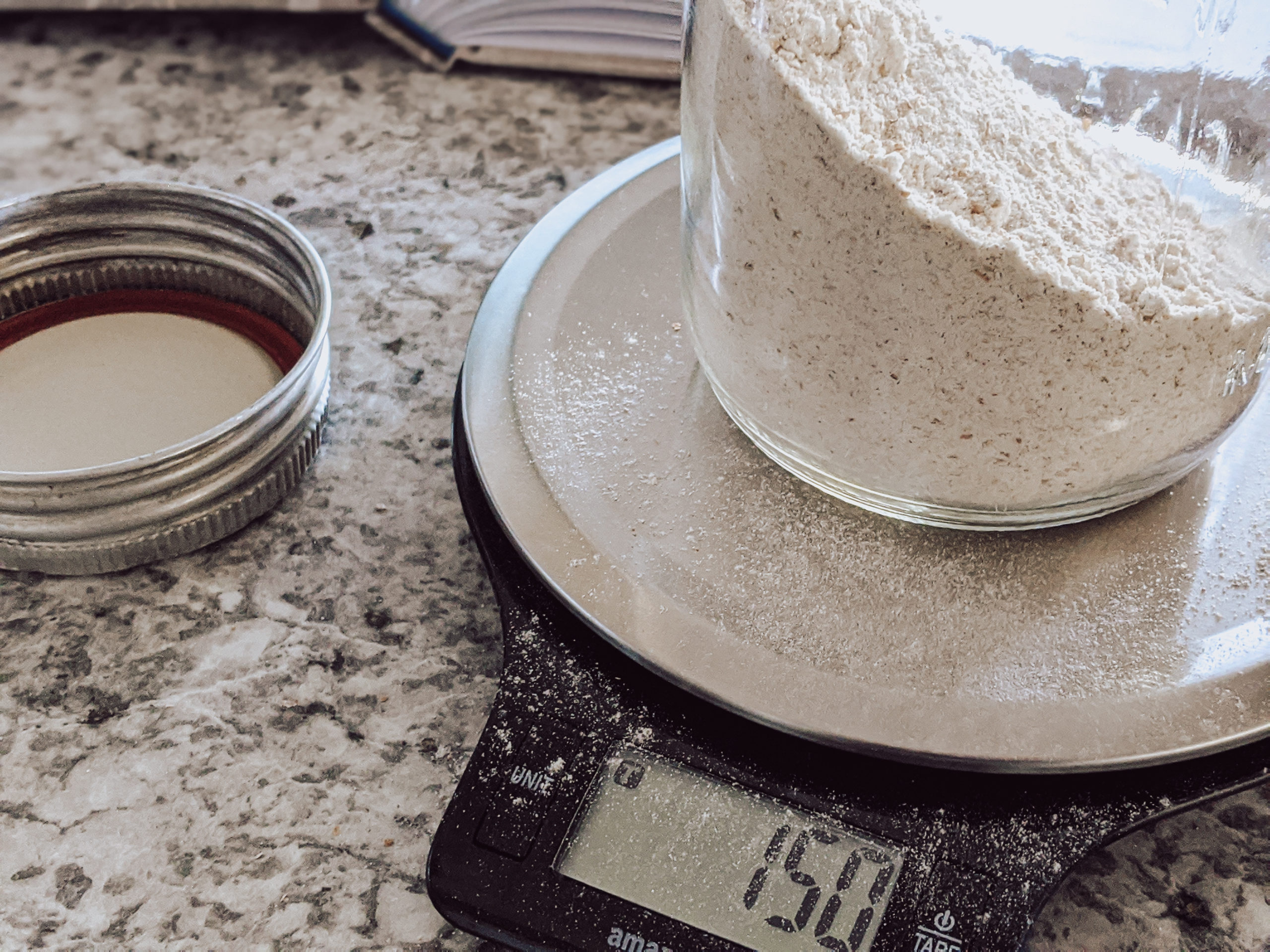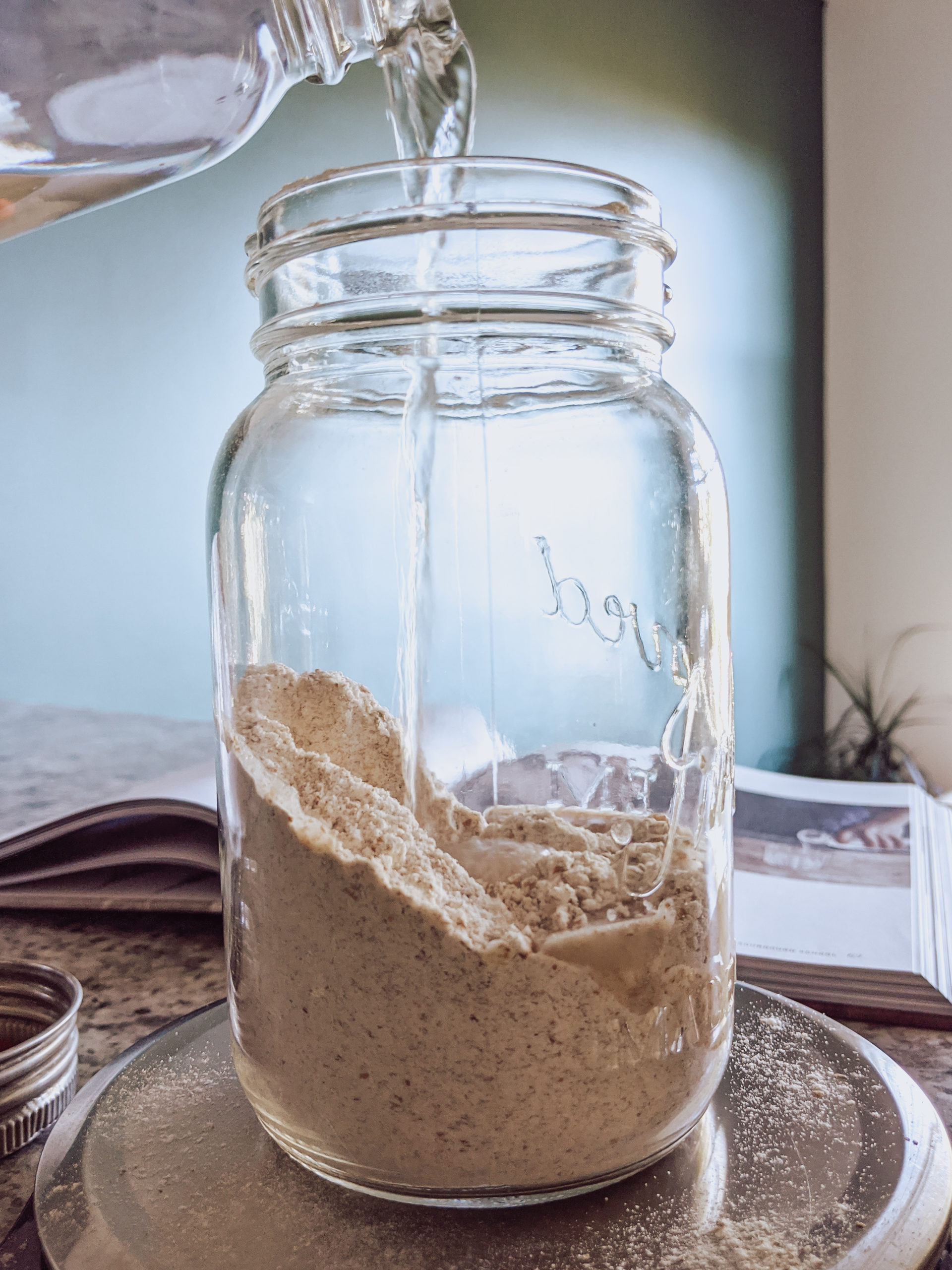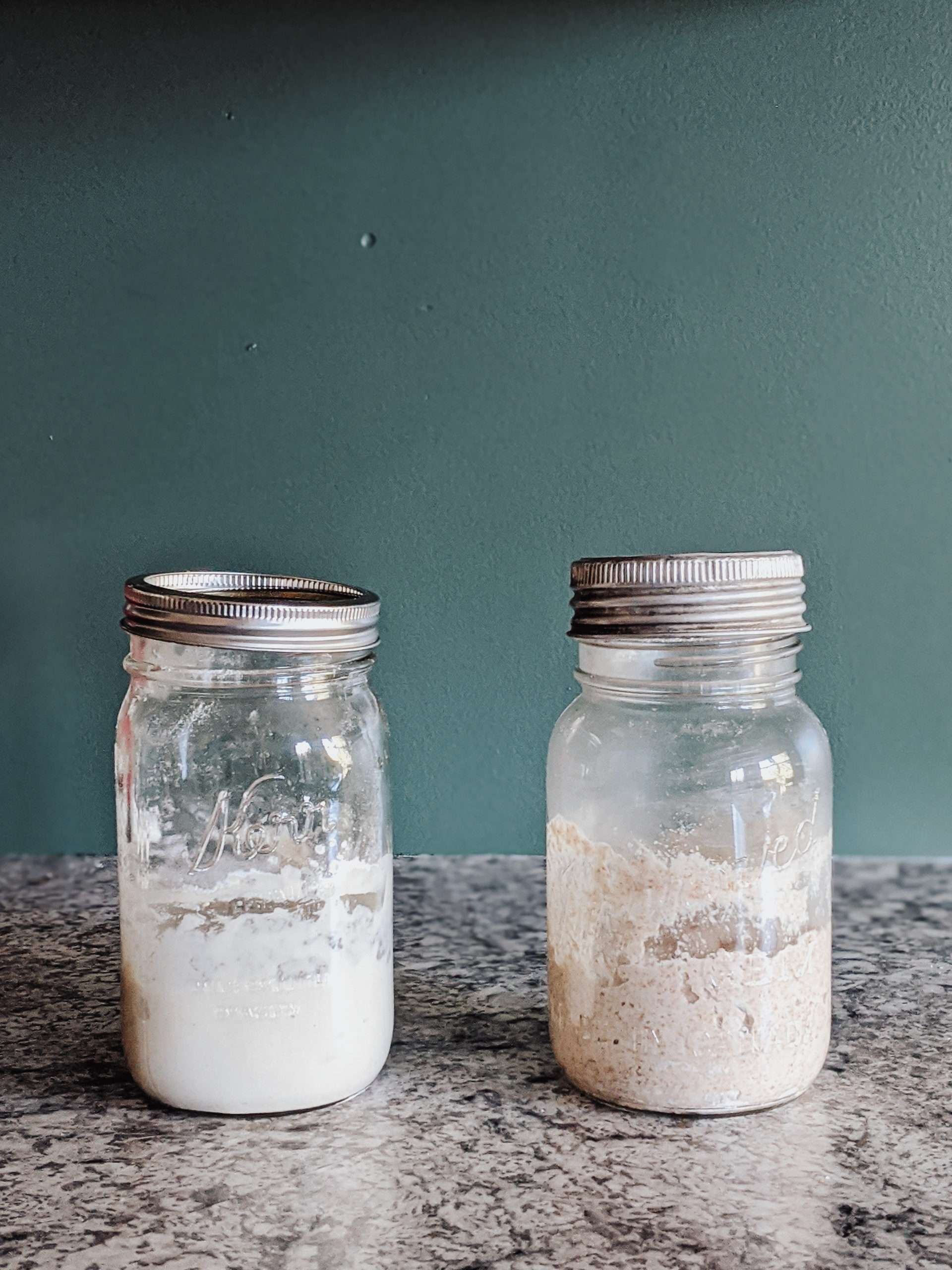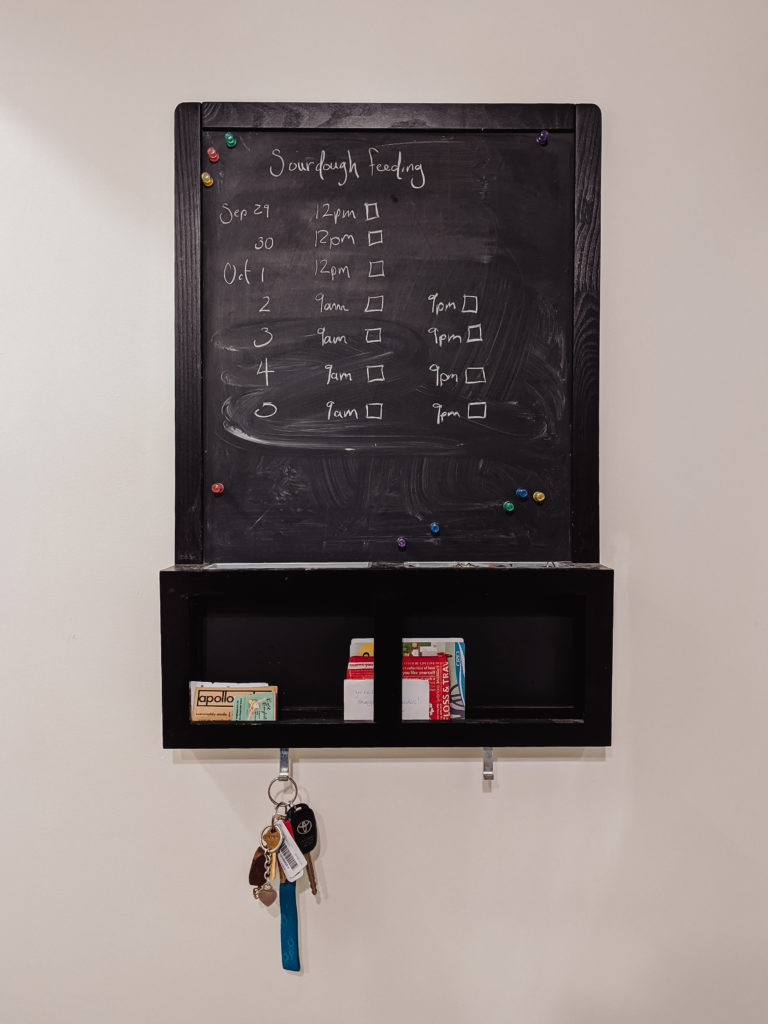Coming to the end of this term, I wanted to do a reflection on how my sourdough inquiry has gone and what it’s revealed.
As a reminder, these are the main questions I was asking going into this process:
- What makes a healthy, happy starter
- How using different types of flour in two different starters affect the flavour of the loaf(s)
I’ll go through them one at a time to share what this inquiry/experiment has taught me through my hands-on experience working with sourdough.
What makes a healthy starter?
Time: For the first few days not a whole lots happened much happened. By the end of the first week I was seeing some action – they were looking a little more airy and I could see that they had risen and dropped a little bit. But it took about 10 days or so for me to see and smell a happy, living starters.
Temperature: This was the biggest constant struggle I had to keep in mind, even after I had established starters. I keep my house a bit on the chilly side, which I have come to learn that sourdough does not love. Sometimes, after feeding, they would not be as active as I thought they should be. I changed the spot that I kept the jars to places that gave off a bit more heat and that seemed to help keep them more lively.
Consistent feeding: Oops! During some of the busier times of the term I definitely neglected my poor starters a bit. There were a few times when I had to revive them – luckily they pulled through each time.
How do different types of starters affect flavour?
Throughout this whole process, I maintained one starter that was made of only unbleached all-purpose flour, and one made of only red-fife whole wheat. Everything I made (with the exception of the last two bakes), I made one using each starter so that I could take note of the flavour difference between the two. This has been the most interesting and fun part of the inquiry, and this is what I’ve found…
All-purpose:
In general, the AP starter consistently produced a more true sour flavour, which I prefer. The sour flavour was cleaner, brighter, and pretty tangy. It offered a sweetness to the sour taste, often with hints of buttermilk or yogurt.
Whole-wheat:
The whole-wheat starter performed pretty steadily, almost always offering up the same notes each bake. It gave off a mild, but still detectable, sour tang. The main flavours that shone through from it were a hearty, grainy, saltiness that, at times, was a tad overpowering in certain baked goods.
The result of the whole-wheat sourdough bagels was the only bake that revealed a bit of a nuttiness along with it, which was a fun twist.
Final Thoughts
Having these flavour profiles laid out, I can now pick and choose which starter I feel appropriate for which baked good. For example, croissants went beautifully with the AP starter, while the whole-wheat bagels were a favourite at our house.
Overall, I’ve had a blast with this inquiry and will absolutely continue trying out recipes. All of this will now be made a lot easier, as I have more knowledge about sourdough care and use than when I first started.
-Megan B.




